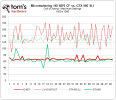A significant increase in the amount of things that are physicalized in the game world is one of many paths to offering players new experiences. We can also go far in improving how the player interacts with the world.
I agree if you mean something like the latest Zelda game, which seems rich in emerging options and spurring player creativity. Though, it also looks like just merging Garys Mod into some generic ARPG. It seems hard to come up with such options for more serious / realistic games, but that's kind of what i want.
If you mean interactions such i can bet money on a horse race in GTA, or i can fuck a bear in BG, or i can change my hairstyle ingame... that does not count. That's not something the player can come up with and do on his own. It's an offer of abstract minigames or multiple choice content, but tangent to the core gameplay loop or even conflicting / interrupting it. It costs a lot of money to implement, feels bolt on, and because scaling up and up and up is expected, the progress is not even noticed.
The keyword to me is emerging options. If the world simulation is rich and robust, the player can come up with multiple options to tackle a problem. If it works he feels smart and rewarded.
It's also good if the player can exhaust and exploit the game without breaking it, which is hard. The more options to the player, the less control for the developer.
But i agree new mechanics is not the only thing we can do to show new things.
Having worked on robotic ragdolls years ago, this surely enables some new mechanics due to agility no longer depending in static animation data. We might do our Arnie and Stallone action heroes much better than before.
But idk yet. What i do know is that such characters can generate an impression of being truly alive, and that's quite interesting on its own.
Maybe this video can show a bit of this impression:
The upper body does nothing, just the legs. But there you can see some subtle details convincing me that this is really happening, it's not just playback of some content.
So now i wonder how it feels to shoot NPCs dead which feel alive to me. This might be much more dramatic than current games.
To me, it's really physics simulation which is the sleeping princess of gaming. It's current use is too passive, often just for decorative, visual effect. We need more motors!



